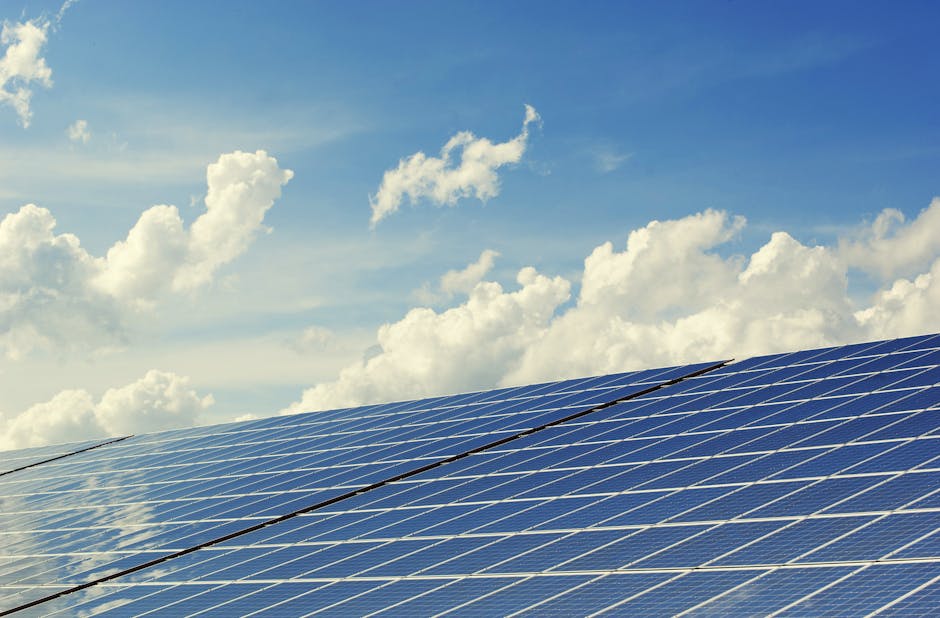How To Convert Solar Power To AC
Solar power is a fantastic renewable energy source that can help reduce electricity bills and minimize our carbon footprint. However, most of our household appliances run on alternating current (AC), while solar panels generate direct current (DC). To make the most of solar energy, we need to convert DC to AC. This article will guide you through the process of converting solar power to AC, covering everything from the basics to the equipment needed and installation tips.
Understanding Solar Power Basics
Before diving into the conversion process, it’s essential to understand some basic concepts about solar power.
- Solar Panels: These are devices that convert sunlight into electricity. They generate DC electricity.
- Inverter: This is the device that converts DC electricity from solar panels into AC electricity that can be used in homes.
- Battery Storage: Some solar systems include batteries to store excess energy for use when sunlight is not available.
Why Convert DC to AC?
Most household appliances, such as refrigerators, air conditioners, and televisions, operate on AC power. Therefore, converting solar-generated DC power to AC is crucial for using solar energy effectively in your home. Here are some reasons why this conversion is necessary:
- Compatibility: AC is the standard form of electricity used in homes, making it essential for powering everyday devices.
- Grid Connection: If you plan to connect your solar system to the grid, you will need to convert DC to AC to feed excess energy back into the grid.
- Efficiency: Using an inverter allows for more efficient energy use, as it can optimize the power output from your solar panels.
Types of Inverters
When converting solar power to AC, choosing the right inverter is crucial. There are several types of inverters available:
- String Inverters: These are the most common type of inverter used in residential solar systems. They connect multiple solar panels in a series and convert the combined DC output to AC.
- Microinverters: These are installed on each solar panel, allowing for individual panel optimization. They are ideal for systems with shading issues or complex roof layouts.
- Power Optimizers: These devices work with string inverters to maximize the output of each panel while still using a central inverter.
Choosing the Right Inverter for Your System
When selecting an inverter, consider the following factors:
- System Size: Ensure the inverter can handle the total wattage of your solar panel system.
- Efficiency Rating: Look for inverters with high efficiency ratings (above 95%) to maximize energy conversion.
- Warranty: A longer warranty period can indicate a more reliable product.
Installation Process
Installing a solar power system and inverter can be complex, but here’s a simplified overview of the process:
1. Assess Your Energy Needs
Before installation, determine how much energy your household consumes. This will help you size your solar panel system and choose the right inverter.
2. Choose a Location for Solar Panels
Select a location with maximum sunlight exposure, typically on the roof or in an open area. Ensure the area is free from obstructions like trees or buildings that could cast shadows.
3. Install Solar Panels
Follow the manufacturer’s instructions to mount the solar panels securely. Ensure they are angled correctly to capture sunlight effectively.
4. Connect the Inverter
Once the solar panels are installed, connect them to the inverter. This usually involves wiring the panels to the inverter’s DC input terminals.
5. Connect to the Electrical System
Next, connect the inverter’s AC output to your home’s electrical system. This may require a licensed electrician to ensure safety and compliance with local codes.
6. Test the System
After installation, test the system to ensure everything is functioning correctly. Monitor the inverter’s display for any error messages and check that your appliances are receiving power.
Battery Storage Systems
If you want to store excess solar energy for use during cloudy days or at night, consider adding a battery storage system. Here’s how it works:
- Charge Controller: This device regulates the flow of electricity between the solar panels, batteries, and inverter, ensuring batteries are charged safely.
- Batteries: Store excess energy generated during the day for use when solar production is low.
- Inverter with Battery Backup: Some inverters are designed to work with battery systems, allowing for seamless energy use.
Benefits of Converting Solar Power to AC
Converting solar power to AC offers numerous advantages:
- Energy Independence: Generate your own electricity and reduce reliance on the grid.
- Cost Savings: Lower electricity bills and potential income from selling excess energy back to the grid.
- Environmental Impact: Reduce your carbon footprint by using clean, renewable energy.
Common Challenges and Solutions
While converting solar power to AC is beneficial, there can be challenges. Here are some common issues and their solutions:
- Shading Issues: If trees or buildings shade your solar panels, consider trimming branches or relocating panels to a sunnier spot.
- Inverter Failure: Regularly check your inverter’s performance and consider investing in a high-quality model with a good warranty.
- Battery Maintenance: If using batteries, ensure they are maintained properly to extend their lifespan.
Conclusion
Converting solar power to AC is a crucial step in harnessing the full potential of solar energy for your home. By understanding the basics, selecting the right inverter, and following proper installation procedures, you can enjoy the benefits of renewable energy. Not only will you save money on electricity bills, but you’ll also contribute to a more sustainable future. Embrace the power of the sun and make the switch to solar today!




